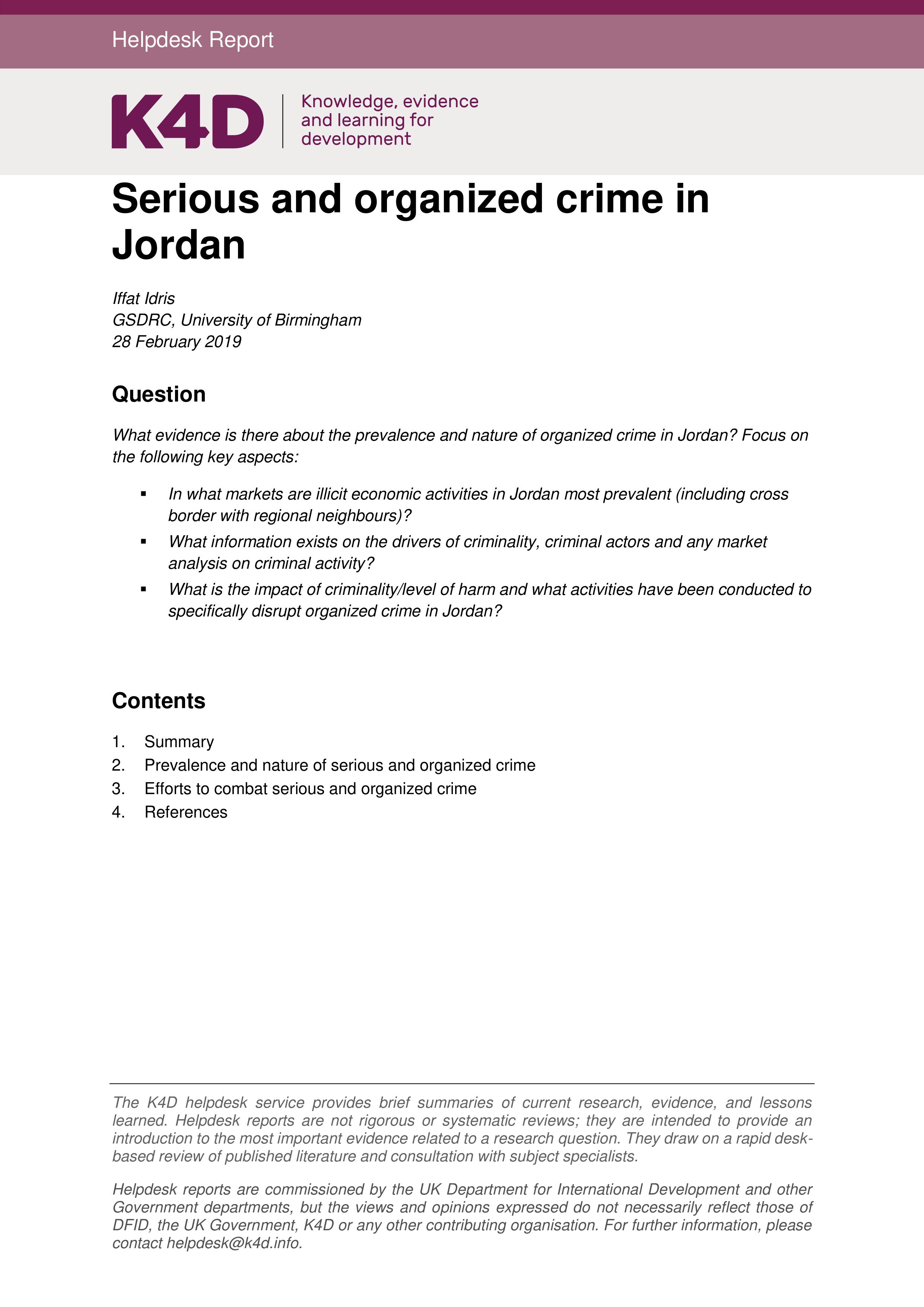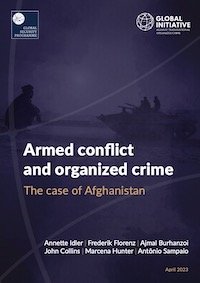By Iffat Idris
This report gives the findings of a ‘quick scan’ review of available literature on political will and serious organized crime (SOC). It covers the five broad themes of the SOC Anti Corruption Evidence (ACE) research program: i) political will and SOC; ii) political will, SOC, kleptocracy, and illicit finance; iii) political will, SOC, and sanctions; iv) political will and trafficking; v) political will, SOC and COVID-19. Noting that political will is often used as a ‘catch all’ explanation for the failure of reforms or policies, the report begins by discussing definitions of political will. The literature generally describes it as the willingness and commitment of decision-makers to carry out reforms or implement policies to address particular problems. Malena (2009: 19) defines it as the sum of political want, political can, and political must. Reflecting the complexity of the phenomenon, political will has numerous enabling factors, notably implementation capacity, quality of governance, organizational set-up and functioning, and societal factors. With regard to the measurement of political will, there is consensus that mere statements, policies, or legislation are not enough – political will has to be manifested in concrete action. Political will and SOC: The review finds that political will is highly relevant to SOC, both because SOC and corruption often involve political leaders or government officials, and because political will is a necessary condition for effective efforts to combat SOC and corruption. Increasing recognition of the scale of SOC, and the need to combat it, is reflected in national and international commitments, frameworks, and so on. However, key implementation challenges include lack of coordination between different agencies or across different frameworks, and the fact that those tasked with implementation are often involved in SOC themselves. Measurement challenges include the clandestine nature of SOC. Capacity indicators, ‘objective’ situation indicators, and public perception indicators are three sets that can facilitate the measurement of political will to combat SOC. Political will, SOC, kleptocracy and illicit finance: The review finds that SOC is strongly connected to both kleptocracy (in which political leaders use their power to increase their wealth) and illicit financial flows (IFFs) (whereby funds are illegally transferred out of a country). The literature stresses the importance of political will to combat kleptocracy and IFFs. While there has been a rise in laws and regulatory frameworks to curb money laundering, implementation of these has been weak. The UK exemplifies this: it is one of the biggest global financial hubs and a major destination for IFFs, but despite laws and policies targeting IFFs and kleptocracy, progress has been limited. The report finds that the political will in Washington to curb illicit finance appears strong, but it is too early to assess the impact of this. Political will, SOC, and sanctions: Sanctions can be used to combat SOC, in particular transnational SOC, and by targeting individuals or groups rather than the general population, harm to ordinary citizens can be averted. However, while relatively easy to impose, the review finds that they are not the ultimate solution and a number of caveats apply to their use; for example, they are not a replacement for other law enforcement measures, and they do nothing to address root causes of SOC. The paper looks at the experience of the US, which has long used sanctions as a tool to combat SOC and human rights abuses, and of the UK, which is also making increasing use of these to target corruption, kleptocracy, and human rights abuses. Political will, SOC, and trafficking: Trafficking (for example, drugs, human trafficking for labor or sex) is one of the main forms of SOC, and traditional approaches to combat it fall into prevention, protection, and prosecution. The review finds that political will is especially relevant in combatting trafficking in two regards: a) determining the focus of efforts (supply-side versus demand-side) and b) determining which interventions are carried out. To date, the focus has been on supply-side interventions despite these showing limited effectiveness. The decision is largely a political one. The paper illustrates this by looking at approaches by the US to tackling drug trafficking, and approaches by both origin and destination countries to tackling trafficking in persons for forced labor. Political will, SOC, and COVID-19: The review finds that, as with conflicts and humanitarian emergencies, the COVID-19 pandemic has created new opportunities for SOC; for example because of increased online activities, scarcity of certain goods (such as healthcare products) and the economic downturn. Human trafficking and health sector-related crime are especially up. The paper highlights a number of factors likely to affect (diminish) political will to combat SOC related to the pandemic, including lack of public resources, and prioritization of dealing with the health impact of COVID-19. The review demonstrates the importance of political will for effectively tackling SOC, illicit finance, and transnational corruption, but also shows why it is challenging to find political will, measure it, and create demand for it.
Birmingham, UK: University of Birmingham. 2022. 56p. SOC ACE Evidence Review Paper No. 1.





















